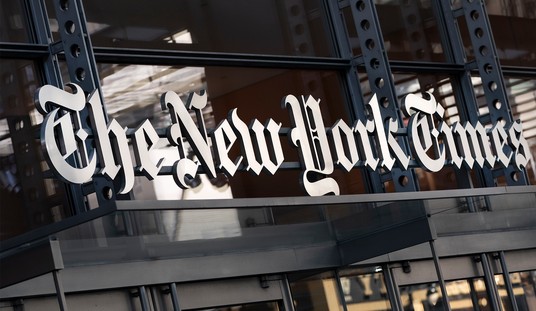In the final month of 2021, the U.S. economy created a less-than-stellar 199,000 jobs, which fell woefully short of the consensus among economists that approximately 400,000 jobs would be created.
However, the lackluster jobs number is just one of many datasets within the latest Bureau of Labor Statistics Employment Situation Summary that defies economical common sense.
First and foremost, there are currently10.6 million job openings throughout the U.S. economy. Based on this statistic alone, one would assume that December would have been a gangbusters month for jobs created. As all Americans can attest, employers are desperate to add employees.
However, even though 10.6 million jobs remain unfilled, employers could only fill less than 200,000 in a month when retailers are typically desperate to fill seasonal positions. On its face, that makes little sense.
Second, according to the December jobs report, the unemployment rate declined from 4.2 percent to 3.9 percent. Ordinarily, a 3.9 percent unemployment rate is cause for celebration.
While a 3.9 percent unemployment rate would seem to be reason for optimism, it surely is not, when one considers the full context of our current economic situation. This is because an untold number of Americans have dropped out of the workforce and are no longer seeking employment.
As the latest jobs report shows, the labor participation rate remained unchanged at 61.9 percent, which is far below pre-pandemic levels. For instance, in February 2020, the U.S. labor participation rate was a more robust 63.4 percent. But even that falls well below the historic average of the U.S. labor participation rate, which was north of 66 percent from the mid-1980s to the mid-2000s.
Recommended
Third, wages are rising, but they are not keeping up with inflation. In December, average hourly earnings increased by a meagre 19 cents per hour. Over the past year, average hourly earnings increased by 4.7 percent, which sounds good. Yet, when the rate of inflation is 6.8 percent year-over-year, the 4.7 percent increase is actually a net loss for hourly workers.
This is made even more flummoxing when one considers that the Federal Reserve recently announced the U.S. economy is in the midst of a “tight” labor market. How can the U.S. economy be in a “tight” labor market if hourly wages are not even keeping pace with inflation?
The paradoxes within the most-recent jobs report, some (but not all) of which were described above, begs the question: what is causing all of this chaos?
Although that is a complex question, the bottom line answer is quite simple: too much government getting too much in the way of our free-market system.
For instance, the Biden administration’s more-than-generous welfare handouts have likely created an environment in which too many Americans have become attuned to being dependent on the government rather than dependent on themselves.
This is evident by several of Biden’s policies, such as the huge increase in food stamp beneficiaries and benefits during his tenure in the Oval Office.
In all fairness, some of the current programs, such as the child tax credit, were created during the depths of the pandemic by the previous administration. Yet, the Biden administration, instead of slowing or ending many of these pandemic-era programs, has increased and extended them.
This is true of the pause on student loan debt repayment, the eviction moratorium, as well as many more.
At the same time, the Biden administration is coming down hard-and-heavy on job creators. The administration’s insistence on higher taxes and more draconian regulations, especially on U.S. energy producers, is assuredly causing employers more headaches than they can handle. After all, it is difficult to hire more workers and offer them competitive compensation when the federal government’s regulatory leviathan is constantly knocking at the door.
As we enter the one-year point of the Biden presidency, with more than 10.6 million jobs unfilled and more Americans on the dole than ever, it is important to remember that just before the pandemic, the economy was humming along.
It is also important to remember the primary reason that the U.S. economy was thriving pre-pandemic was mostly due to the free-market reforms—lower taxes, less regulations, energy independence, etc.—that have now been abandoned in place of central planning courtesy of Biden’s big government baseness.
Chris Talgo (ctalgo@heartland.org)is senior editor at The Heartland Institute.

























Join the conversation as a VIP Member